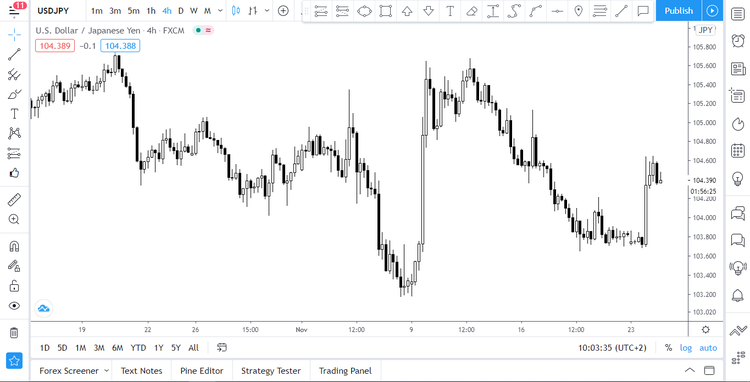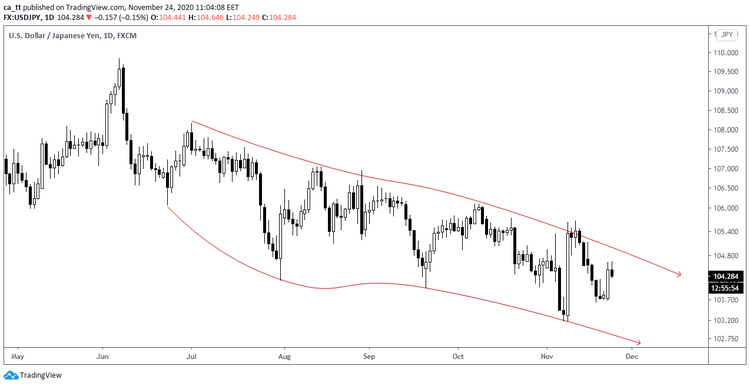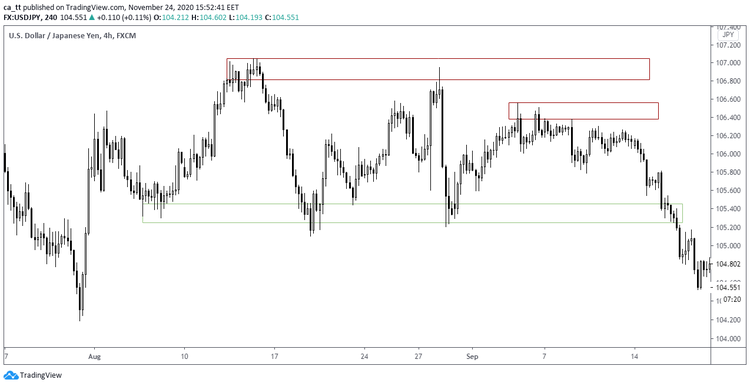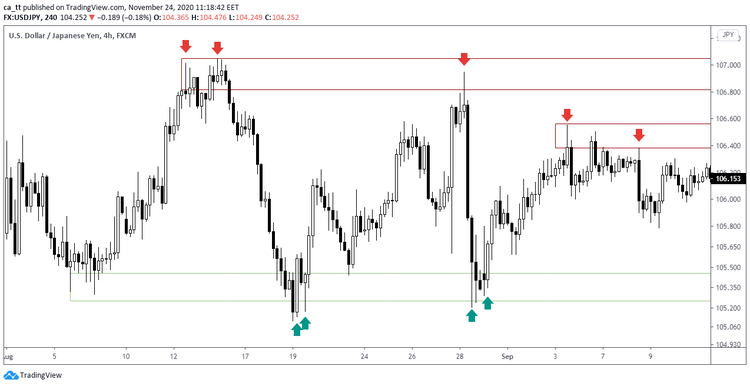When you dip your toe in the Forex trading, it dawns on you - there’s so much to learn! There are a lot of aspects and factors to consider here:
- fundamental analysis
- indicators
- candlesticks
- chart patterns
- trading strategies
- economic releases
- market news
- trading psychology
- money management rules
Not to mention this tricky trading platform where you’re supposed to open your trades, monitor real-time price quotes and analyze charts. Well, our advice is - be patient. To be successful and efficient in your trading, you need to achieve a state of mind where everything is perfectly organized. Yes, when you’re only getting started, you may feel overwhelmed. So, do consider our advice - just take one step at a time and you’ll be fine. In this article, we’ll take a look at some of the most essential tools of a trader and give you some tips that will help you avoid the most common rookie mistakes. Now, let’s get down to business!
Tool #1. Trading Chart
By now, you’ve probably registered a live or a demo trading account with a trustworthy broker. If not, make sure to pick a reliable broker with vast experience in the industry, FSA regulation and 350,000+ active customers across the globe.
Once you set up a trading account, you’ll get access to a trading platform. Now, open a trading chart. It displays real-time quotes provided by your broker. If you want to get a more complete market picture, you can opt for some professional trading charts, like TradingView charts. They are very popular among traders.
Remember, we promised to share useful tips to avoid common mistakes of beginner traders? Here comes tip #1: When you notice that your broker’s quotes differ from the pricing you see in TradingView software - don’t panic. Just analyze the price movement using TradingView, but place trades based on your broker's quotations. It’s quite normal that pricing may slightly differ. It can happen because TradingView and your broker may have different quote providers. A 1-2 pip difference in price is not that big a deal.
Tool #2. Time Frames
Now, let’s talk about time frames. A time frame represents a time interval during which one candlestick is plotted on the chart. If you look at the upper menu of the Trading View chart window, you will see a bar with the time frames (highlighted in red). The most popular time frames are daily (D), 4-hour (4h), hourly (1h) and 5-minute (5m). You can switch between the time frames to get various perspectives on the asset you’re about to trade:
Tip # 2 - Novice traders prefer 1-minute time frames. They believe that smaller time frames display more candlestick combinations. However, if you’re not a professional scalper, you should avoid these time frames.
To pick the time frame that suits you best you should know your temperament and personality.
- Are you an adrenaline junkie? Do you enjoy risk, extreme sports and other thrilling activities that give you that adrenaline rush? Then pick 5 or 15-minute time frames.
- If you’re the type of person who doesn’t like making rash decisions, who prefers the 'safe side,' select a wider time frame - 4-hour, daily or even monthly time frame will do.
Tool#3. Trading Instrument
A trading instrument or an asset is what you will be trading. You can choose one or several trading instruments. In the Forex market, the most popular instrument is a currency pair. There are 7 major currency pairs, aka "majors:"
- The Euro and US dollar: EUR/USD.
- The British pound sterling and US dollar: GBP/USD.
- The US dollar and Japanese yen: USD/JPY.
- The Australian dollar and US dollar: AUD/USD.
- The US dollar and Canadian dollar: USD/CAD.
- The US dollar and Swiss franc: USD/CHF.
- The New Zealand dollar and US dollar: NZD/USD.
And here comes tip # 3: Do not blindly trade many currency pairs at the same time, especially if you’re not sure what drives them.
Professional traders prefer focusing on one or two instruments. Learn from their experience, pick 2-3 currency pairs, EUR/USD and USD/JPY, for example. Study the volatility of each instrument, find out which news and releases trigger its rapid movement, study its correlation with other pairs. Read about major central banks, how they set interest rates and regulate their monetary policies and learn how it may affect the prices of national currencies.
Tool#4. Technical Analysis
Let’s go straight to practice and try to analyze your first trading chart. A trader should focus on 3 main components:
- Trend (price direction).
- Trend reversal areas or zones.
- Candlesticks (displays the price range, market's open, high, low and close price for the day).
Open the daily chart and try to find the trend first. What is the price’s direction? Is it going up, down or sideways? You don't need any complex calculations here, just look at the chart carefully:
We have the USD/JPY chart, where the price is slowly going down, demonstrating a clear downtrend where:
- each subsequent bottom is lower than the previous one;
- each subsequent top is lower than the previous one.
Let’s spot the supply and demand zones first - these are the areas where the price tends to start rising or falling:
As we can see, the price goes to the demand zone and starts rising; when it approaches the supply zone - it usually bounces down. Supply/demand zones are the best areas to trade.
Candlesticks
The most important component of a trading chart are candlesticks. Each candle is unique. Let's try to spot the most powerful candles on our chart. Pay attention to the candlesticks formed near the supply/demand areas:
If a massive candle is formed within the demand/supply zone, it usually has long shadows and engulfs several previous candles. Such candlesticks indicate that a reversal is on the way. To generate a decent income from trading, you should know at least 2-3 patterns. At the same time, it makes no sense to know hundreds of candlestick combinations. Learn to trade 2-3 chart patterns, and it’ll be enough to earn good money.
Wrapping Up
In this article, we’ve covered everything you need to know to get started in trading. As you can see, it’s all pretty simple: you don't need to perform any complex calculations and try to learn everything at once. Be patient, study 2-3 basic trading instruments and chart patterns and you’ll be all set to start your trading journey. And remember - consistency is key when you master any skill.
If you want to make money trading Forex, you will need the services of a broker. For example, you can rely on the services of the regulated broker AMarkets, which offers protection of up to $20,000 for traders' accounts.
AMarkets offers a wide range of trading assets to invest in: Forex, stocks, cryptocurrencies and commodities.
Read iHodl and trade with AMarkets thanks to an exclusive bonus of 20% on your deposit.







